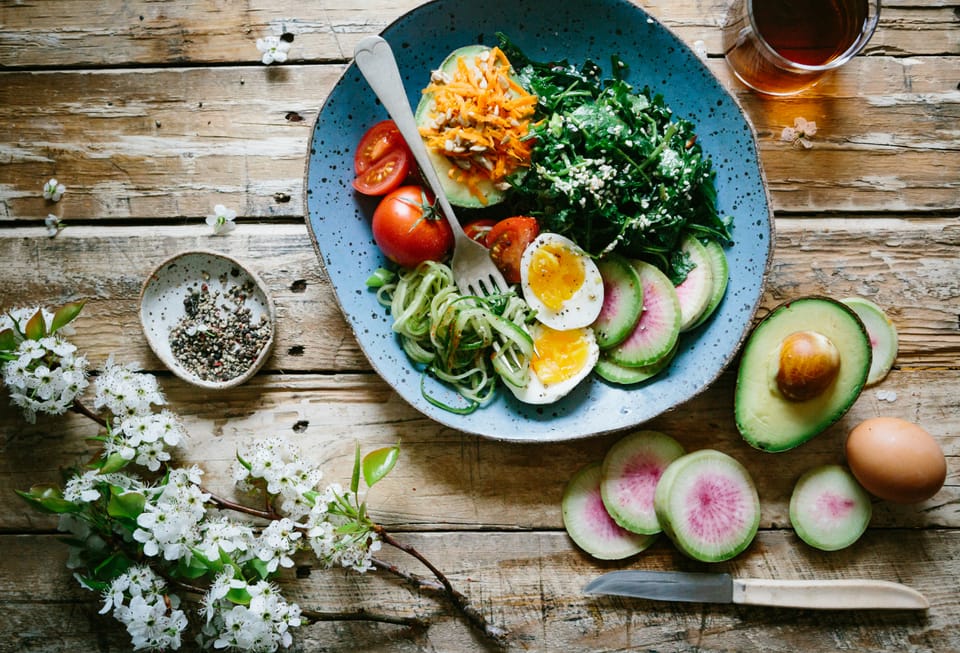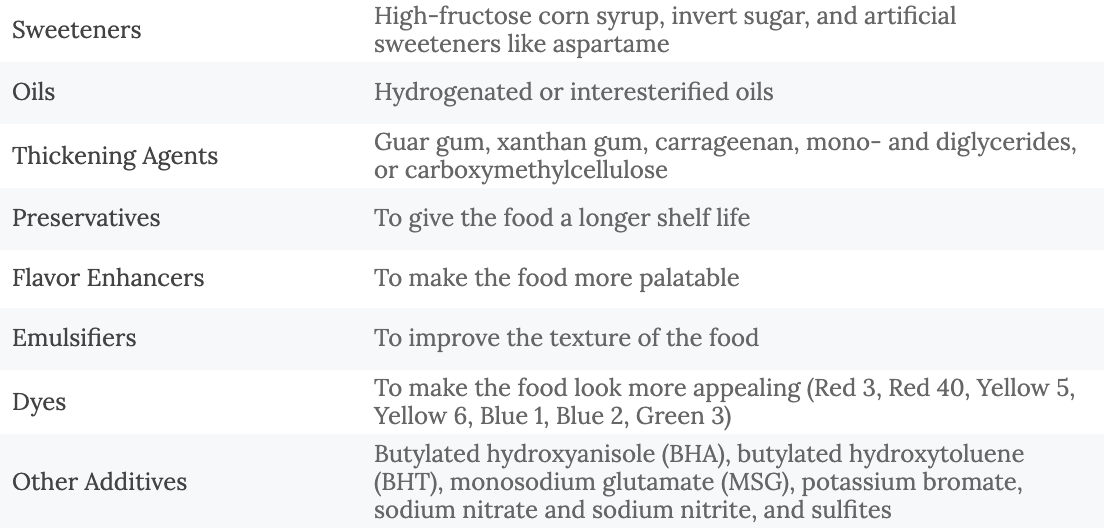Navigating Processed Foods: What to Buy and What to Avoid

You often hear advice like “Don’t eat processed” or “Avoid processed foods” – but what is "processed" food? There are varying levels to what’s considered processed and "ultra-processed". By definition, processed food is any food that has been altered from its original state, either through preparation or packaging. Processing can include:
- Washing, chopping, or cutting
- Canning, freezing, or drying
- Pasteurizing, blanching, or cooking
- Adding ingredients like sweeteners, oils, colors, or preservatives
- Fortifying with nutrients like fiber, calcium, or vitamin D
While processed food often carries a negative connotation, not all processed foods are inherently bad. For example, pasteurizing milk removes harmful bacteria, and canning fruits and vegetables helps prevent spoilage. However, other processed foods like processed foods like frozen meals, packaged snacks, candy, sugary drinks contain additives and harmful chemicals that are not inherent to the food. These are the foods you should to avoid.
Tips for Navigating Processed Foods
Read Nutrition Labels
Nutrition labels are found on most packaged foods and show the ingredients and nutrients. Generally, the fewer the ingredients, the better. Avoid products containing ingredients you can't pronounce or those you wouldn't typically use in your own kitchen. Some examples are below:

Shop the Perimeter of the Grocery Store
The outer perimeter of grocery stores is where you’ll find fresh produce, meat, dairy, and other nutrient-dense foods. Most heavily processed items are found in the aisles. However, not all aisle items are bad. Foods like oil, tuna, canned beans, rice, and spices are typically less processed.
Always check the nutrition label. For example, your favorite peanut butter might contain added sugar and hydrogenated oils. Opt for peanut butter made from only peanuts (and maybe salt, if you’re not limiting sodium!).
Tip: If a food doesn’t have a label, like avocados, apples, or bananas, it’s likely a single-ingredient food – no label needed.
Avoid Processed Meats
Processed meats, including salami, ham, cured bacon, sausages, hot dogs, and canned meats, often contain harmful chemicals. Any meat that’s been smoked, salted, cured, dried, or canned falls into this category. Check for Nitrates and Nitrites: These preservatives are commonly used in processed meats and can be found on labels. Instead, choose fresh or frozen meats like salmon, chicken breast or thighs, beef, cod, shrimp, or ground turkey.
Consider beans, lentils, chickpeas, tofu, and tempeh as alternatives for sandwiches, salads, or main dishes. They’re high in protein and nutrient-dense.
Cook at Home
Home cooking gives you full control over the ingredients you use, allowing you to avoid harmful chemicals and additives. Fresh, whole foods like fruits and vegetables tend to have higher nutrient content and often taste better! Here are 5 fundamentals to get you started:
- Stock Your Pantry with Essentials
- Spices and Seasonings: Basics like salt, pepper, garlic powder, cumin, paprika, and dried herbs (like oregano and thyme) add flavor to any dish.
- Staples: Keep versatile ingredients on hand, such as olive oil, canned beans, pasta, rice, canned tomatoes, and broth.
- Fresh Ingredients: Keep a few key fresh items like onions, garlic, eggs, lemons, and seasonal vegetables for adding depth to meals.
- Learn Basic Cooking Techniques
- Sautéing: Quickly cooking ingredients in a little oil over medium-high heat is ideal for veggies, meats, and aromatics like garlic and onion.
- Roasting: Great for cooking meats and vegetables with minimal effort. Just season, drizzle with oil, and bake at 375–425°F until golden.
- Boiling and Simmering: Perfect for pasta, rice, grains, and making soups. Simmering helps develop flavors in sauces and stews.
- Baking: Useful for a variety of dishes, from casseroles to fish, and, of course, baked goods. Make sure to preheat the oven and follow recipes for best results.
- Understand Ingredient Pairings
- Use Aromatics: Onions, garlic, ginger, and fresh herbs add flavor to almost any dish. Sauté or cook these first to create a flavor base.
- Balance Flavors: Aim for a balance of salty, sweet, sour, and savory. For instance, add a splash of vinegar or lemon juice to lift the flavors at the end.
- Experiment with Herbs and Spices: Herbs (like basil, parsley, and cilantro) and spices (like chili powder, curry, and cinnamon) can transform simple ingredients.
- Follow Simple Recipes
- Start with Simple Dishes: Begin with beginner-friendly recipes, like pasta dishes, stir-fries, or sheet pan meals, to build confidence.
- Read the Recipe Fully Before Starting: Make sure you understand each step and have all ingredients ready (known as “mise en place”) to avoid last-minute surprises.
- Adjust to Taste: Recipes are guidelines; adjust seasonings and ingredients to fit your preferences as you cook.
- Practice Basic Meal Timing
- Multi-Tasking: Start with items that take the longest to cook (like roasting veggies or boiling grains) and then prepare other components.
- Clean as You Go: Put ingredients back after use, and wash dishes and tools as you cook to keep your space tidy.
Meal Prep
Poor food choices are usually a result of having limited options, limited time, or limited money and sometimes all the above. Preparing food in advance saves time during the week and helps you avoid reaching for convenient foods when you need something fast. Some easy ways to prepare food are:
- Plan your meals + recipes: Decide on a few meals you want to prepare, ideally those that use overlapping ingredients to cut down on waste and costs
- Schedule Prep Time: Set aside one or two blocks of time each week to prep. Many people do this on Sundays and mid-week to stay stocked up
- Make a shopping list: Opt for Versatile ingredients like eggs, quinoa, leafy greens, and beans can be used in various meals and are great for quick options.
- Prep Ingredients in Batches: Chop and Store: Dice veggies, cook grains, and prepare proteins in larger quantities.
- Use Proper Containers: Use airtight containers to keep meals fresh. Glass containers are great for reheating, and divided containers help keep ingredients separate
Final thoughts
Processed foods are not all created equal. While some processing is harmless—or even beneficial—many processed items contain ingredients that can negatively impact your health. By reading nutrition labels, shopping smart, and preparing meals at home, you can minimize your intake of highly processed foods and make healthier choices.
Remember, balance is key! Incorporate whole, nutrient-dense foods into your daily routine, and don’t stress over the occasional convenience meal. Small, mindful changes can lead to big improvements in your overall well-being.